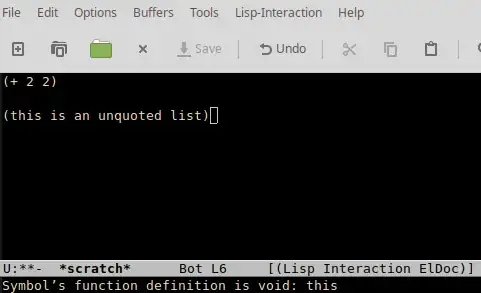I'm following the tutorial's "Making error": reproduced in the screenshot below. The manufactured error does not open the Backtrace window as it should. The same page says "It is possible to prevent Emacs entering the debugger in cases like this. [...] in the echo area and look like this:
Symbol's function definition is void: this
". And that is indeed what I get. Thus my question: how to switch on the backtrace feature?

